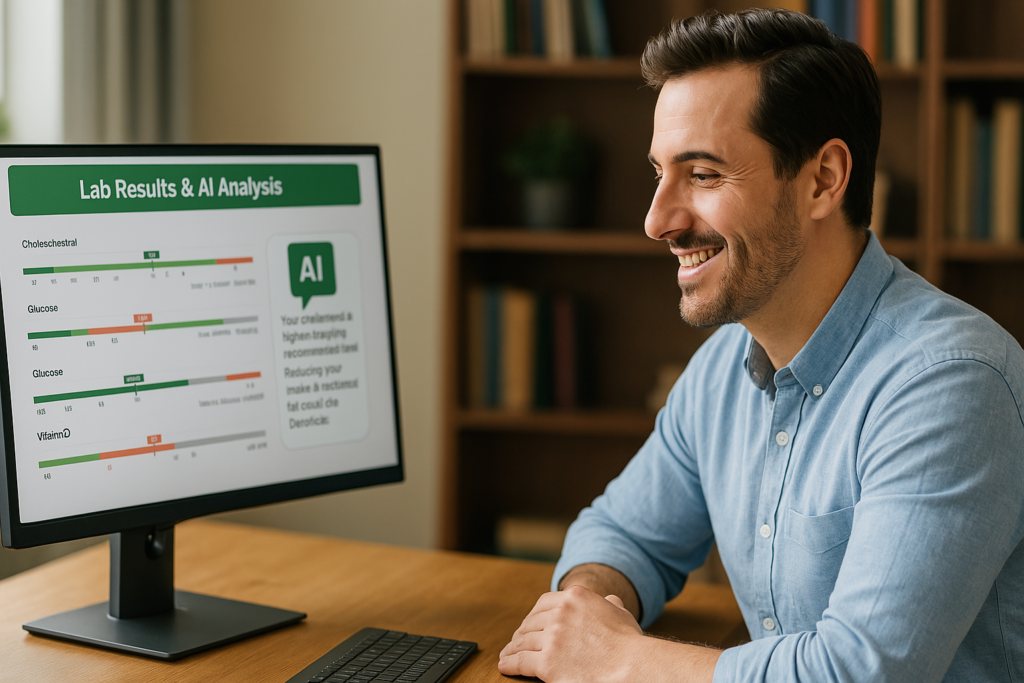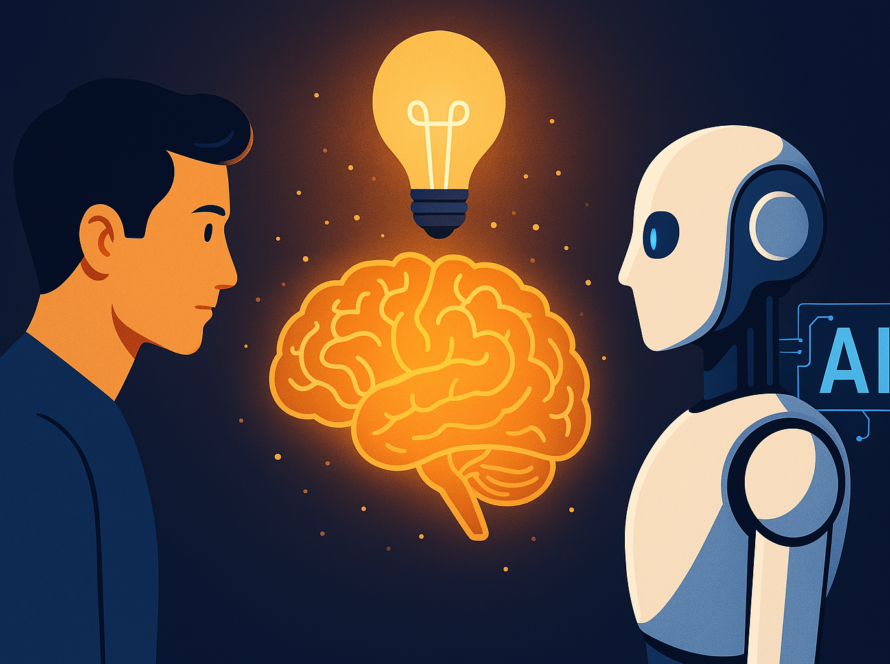
As a pharmacist, reviewing lab results is second nature to me. Because of my background, I’ve learned how to approach lab data with curiosity and clarity. I know what to look for and how to think critically about what the numbers are telling me. I also believe that clinicians have a responsibility to apply the same standard of care to their own lives. With that mindset, I used my clinical training and the support of a specific AI tool to optimize my own health and build a smarter, more proactive wellness strategy. What surprised me wasn’t just the lab work itself. It was how combining it with AI created a completely new level of clarity and empowerment.
Most people receive their results with little more than a “you’re fine” or a printout full of terms they don’t understand. But those numbers contain powerful, personalized insights. When interpreted thoughtfully, they offer a roadmap. Not only to treat illness but to actively build better health.
After receiving my most recent full lipid panel, comprehensive metabolic panel, vitamin D level, and complete blood count (CBC), I ran the results through ChatGPT, an AI assistant trained on medical literature and clinical guidelines. I wasn’t looking for a general summary. I wanted a sharp, plain-language explanation of what every marker meant, what was optimal versus average, and how my daily habits might be influencing these numbers
Here’s what I discovered:
My LDL cholesterol was elevated. According to the American Heart Association, high dietary cholesterol intake, especially in cholesterol-sensitive individuals, can significantly raise LDL levels (AHA Cholesterol Guidelines). The AI helped me trace this back to my daily habit of consuming five egg yolks. A detail that even as a clinician, I had previously overlooked.
My vitamin D levels were low. Easy to miss without checking routinely. The Endocrine Society guidelines support supplementation up to 5000 IU per day for those with confirmed deficiency (Endocrine Society Clinical Practice Guideline).
My liver, kidney, and immune system markers were all within ideal ranges. A reassuring confirmation that my body was functioning well.
With those insights, I built a data-driven, personalized action plan.
I reduced my egg yolk consumption to two per day and replaced the rest with egg whites to maintain protein. I began taking 5000 IU of vitamin D daily. I kept my supplement stack of krill oil, beet root, turmeric, and ginger, this time with even more confidence in their targeted benefits. I tracked my workouts and walks with greater intention, knowing they directly support my lab values.
This approach wasn’t about replacing professional care. It was about deepening it. As a healthcare provider, I see AI not as competition but as a tool. One that amplifies decision-making, improves conversations with colleagues, and helps guide patients toward better questions and better health.
🧪 Benefits of Combining Lab Work with AI
It translates clinical data into real-life meaning. Patients and providers alike can spot patterns and make sense of results. It flags risk early. Before symptoms appear, trends in labs often whisper what is coming next. It delivers personalized, science-backed suggestions. AI does not replace judgment. It sharpens it. A 2023 McKinsey & Company report highlights AI’s growing role in supporting clinical decision-making and improving patient engagement (Harnessing AI to reshape consumer experiences in healthcare). It is important to remember that AI interpretations are based on the data it is trained on. They might not always capture the full individual picture. It empowers patient engagement. People ask better questions and take more consistent action.
Important note: This approach is not a substitute for medical advice. It is a supplement. A way to become more curious, more collaborative, and more confident in conversations with your provider. When using AI for health information, be mindful of the platform’s data privacy and security measures.
📘 How You Can Get Started
Request a full lab panel at your next physical. Use an AI assistant like ChatGPT, with a Plus subscription for more advanced features, to interpret the results. These tools may have associated costs. Ask for a plain-English breakdown. Let AI highlight what is working and what needs attention. Build a simple action plan. Start with small, measurable changes. Follow up with your doctor to stay aligned.
One of the most impactful changes I made was adjusting my daily egg yolk intake. It is easy to underestimate how something so small can shift your lab profile. Here is what I found when I compared my previous routine to the smarter, AI-informed version.
🥚 Egg Yolk Nutrient Comparison: 5 Yolks vs. 2 Yolks Per Day

By moving from five to two yolks, I kept the essential nutrients like choline, vitamin D, and B12. At the same time, I cut my cholesterol intake by 60 percent. It was a small shift with a meaningful impact on my lipid profile. According to the 2020–2025 Dietary Guidelines for Americans, there is no strict cholesterol limit. But moderation is recommended, especially when managing LDL and overall heart risk (USDA Guidelines PDF). That is the kind of precision AI brings when you align everyday choices with lab-based feedback.
A Quick Note on Outcomes
Within a few weeks, I began to feel more energized and clear-headed. At my follow-up appointment, my provider noted improvements in my cholesterol numbers. Interestingly, while my doctor had reviewed my initial labs, the AI’s specific highlighting of the high LDL in the context of my egg yolk consumption provided a more direct and actionable insight. It was not something immediately apparent in the standard review. This demonstrates the potential for AI to offer a complementary perspective.
Guiding Others
I recently had a friend named Sarah who received her lab results and felt overwhelmed by the numbers. Using ChatGPT, we broke down each marker in plain language. Her blood sugar was slightly elevated, and the AI highlighted the potential link to her frequent consumption of sugary drinks. Her doctor had not expressed immediate concern. But the AI’s insight prompted Sarah to track her sugar intake more closely and discuss lifestyle modifications at her next appointment. That single shift led to a more proactive approach to managing her blood sugar levels.
Looking Ahead
As someone already deeply integrated in healthcare, I see firsthand how AI is reshaping our landscape. This is not hypothetical. It is happening every day. I see a future where patients and professionals work side by side, armed with data, guided by science, and aligned around purpose. This shift is not about replacing doctors. It is about building stronger, smarter partnerships. With AI, we now have the power to turn lab data into health strategy. To turn information into momentum.
Long-term, I plan to continue using AI to monitor my trends and make proactive adjustments in consultation with my healthcare provider.
For fellow healthcare professionals, I encourage you to explore the potential of AI tools. Use them to deepen your understanding of patient data and to foster more personalized, more impactful conversations.
If you are serious about long-term wellness, do not just get tested. Get curious. Get informed. And with AI in your corner, get empowered.
This is just the beginning. I’ll be sharing more on how to read your labs like a pro, optimize lifestyle based on data, and integrate AI into decision-making. Follow along if you’re curious.
To my fellow healthcare professionals: What role do you see AI playing in your day-to-day practice? The more we share, the more we grow.
📚 References
- American Heart Association. Dietary Fats and Cardiovascular Disease. https://www.heart.org/en/healthy-living/healthy-eating/eat-smart/fats/dietary-fats
- Cordina, J., Coronado, E., Williams, P., & Greenberg, S. (2024, November 15). Harnessing AI to reshape consumer experiences in healthcare. McKinsey & Company. https://www.mckinsey.com/industries/healthcare/our-insights/harnessing-ai-to-reshape-consumer-experiences-in-healthcare
- Endocrine Society. Evaluation, Treatment, and Prevention of Vitamin D Deficiency. https://academic.oup.com/jcem/article/96/7/1911/2833671
- USDA Dietary Guidelines for Americans, 2020–2025. https://www.dietaryguidelines.gov/sites/default/files/2020-12/Dietary_Guidelines_for_Americans_2020-2025.pdf
- J., Coronado, E., Williams, P., & Greenberg, S. (2024, November 15). Harnessing AI to reshape consumer experiences in healthcare. McKinsey & Company. https://www.mckinsey.com/industries/healthcare/our-insights/harnessing-ai-to-reshape-consumer-experiences-in-healthcare


